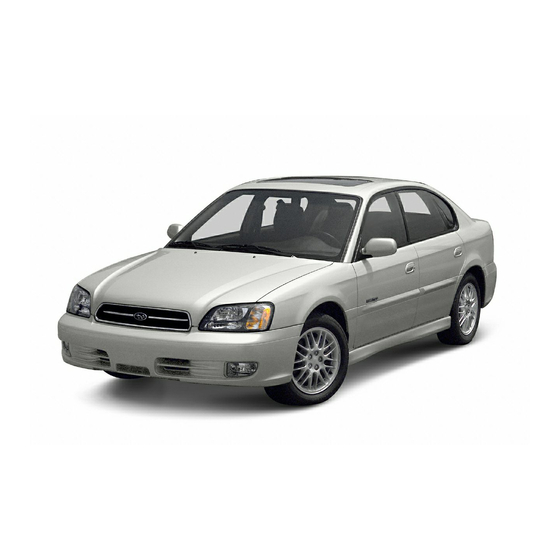
Subaru 2003 Legacy Owner's Manual
Hide thumbs
Also See for 2003 Legacy:
- Service manual (4441 pages) ,
- Quick reference index (80 pages) ,
- Service manual (104 pages)
Table of Contents
Advertisement
Quick Links
Download this manual
See also:
Service Manual
Foreword
Congratulations on choosing a SUBARU vehicle. This Owner's
Manual has all the information necessary to keep your SUBARU in
excellent condition and to properly maintain the emission control
system for minimizing emission pollutants. We urge you to read this
manual carefully so that you may understand your vehicle and its
operation. For information not found in this Owner's Manual, such
as details concerning repairs or adjustments, please contact the
dealer from whom you purchased your SUBARU or the nearest
SUBARU dealer.
The information, specifications and illustrations found in this manu-
al are those in effect at the time of printing. FUJI HEAVY INDUS-
TRIES LTD. reserves the right to change specifications and designs
at any time without prior notice and without incurring any obligation
to make the same or similar changes on vehicles previously sold.
This Owner's Manual applies to all models and covers all equip-
ment, including factory installed options. Some explanations, there-
fore may be for equipment not installed in your vehicle.
Please leave this manual in the vehicle at the time of resale. The
next owner will need the information found herein.
FUJI HEAVY INDUSTRIES LTD., TOKYO, JAPAN
and
are registered trademarks of FUJI HEAVY INDUSTRIES, LTD.
copyright 2002 FUJI HEAVY INDUSTRIES LTD.
Advertisement
Chapters
Table of Contents
















Need help?
Do you have a question about the 2003 Legacy and is the answer not in the manual?
Questions and answers